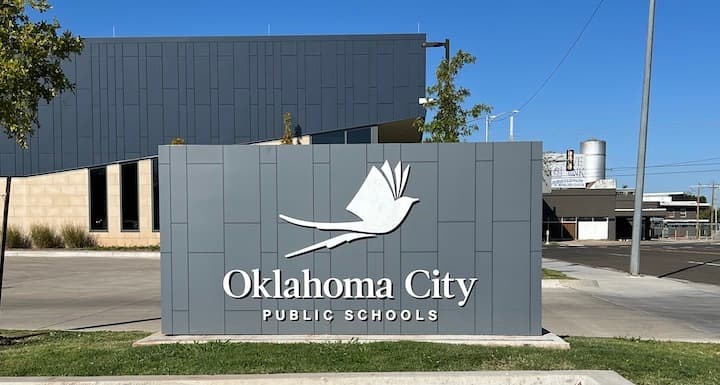
Budget & Tax
Trent England | September 27, 2022
What’s in OKC schools’ massive bond package?
Trent England
A property tax increase is on the ballot for residents of the Oklahoma City School District. The superintendent described it as “the biggest bond election in the history” of the district. A municipal bond is government debt, paid back over time by property tax payers. If passed, the owner of a $250,000 home (average in the district) will pay about $200 more every year in property taxes.
So it’s worth asking, what is in the bond package? And what does it tell us about the priorities of Oklahoma City public schools?
Technically there are two bonds, but one is “small” at just $19 million to pay for some new district vehicles. The other is massive, nearly a billion dollars, for a long list of construction projects and purchases.
Actually, the largest line item in the $936,000,000 package is a catchall—what skeptics would call a slush fund—of $230,048,000. The description there is long but vague and open-ended, basically granting future school boards the power to do whatever they like with those funds within the most basic legal limits. Without these funds, the property tax increase could have been almost 25% less than what is proposed.
Other large expenses make more sense, including two new high schools, two new middle schools, and a new elementary school. There are also funds to expand three middle schools and four elementary schools. These are traditional purposes for school bonds. All together these expenses make up $358,718,000 of the bond package, or 38 percent.
From there, the focus shifts. It’s important to note that public schools across Oklahoma have notoriously low standards, with just one-third of public school students statewide classified as “proficient” in 2019 (prior to COVID). Yet Oklahoma City schools do far worse for students. In 2019, 14.3 percent of Oklahoma City School District students were proficient, and the most recent data shows that number dropping to 9.2 percent.
Yet many of the projects in the proposed bond have nothing to do with academics, nor will they improve building safety or maintenance. In fact, some are likely to increase long-term operating costs for non-academic programs. For example, building a new softball field or creating a new outdoor eating area will create new maintenance costs every year. These costs are not paid for out of the bond.
In one dire example, Douglass High School fails to educate 99 percent of its students. Only .9 percent of the students there are proficient—one out of every 100. What are the District’s priorities for the school? Two of the three bond projects are for athletics, including a new press box for the stadium.
At John Marshall High School, one in 20 students are proficient, but the District hopes to spend $15 million there to build a new stadium addition. Another $11.5 million is earmarked for the school for “a flexible space addition and athletic field renovations.” Perhaps the space is for instructional use, but even so, most of the funds for the school will have little or nothing to do with student learning. The list of bond projects goes on this way, with funding for several schools earmarked exclusively for athletics.
Physical exercise is important, but it is not the reason for public schools. The Oklahoma Constitution requires the Legislature to establish schools “wherein all the children of the State may be educated.” The Legislature had done its duty, establishing school districts and a funding formula. Today, education funding from all sources (local, state, and federal) is at an all-time high in Oklahoma.
Yet the Oklahoma City public schools are doing worse than ever. Now, District leaders want to raise property taxes on parents and other residents. Their number-one expense is a massive slush fund. Other bond funds are earmarked to non-academic uses in schools where almost no students meet basic standards for academic proficiency. Some of these bond projects will drive up future operating expenses, imposing hidden costs on future taxpayers.
The Oklahoma City School District’s announcement of the bond proposal is full of flowery language about “transformation,” “putting kids first,” and providing “a world-class education.” Yet the District is an abject failure. Nothing in its massive bond proposal is likely to change that. At best, it will distract the community, continuing a “bread and circuses” approach that feeds residents’ appetites rather than providing them promised services, like education.

Trent England
David and Ann Brown Distinguished Fellow
Trent England is the David and Ann Brown Distinguished Fellow at the Oklahoma Council of Public Affairs, where he previously served as executive vice president. He is also the founder and executive director of Save Our States, which educates Americans about the importance of the Electoral College. England is a producer of the feature-length documentary “Safeguard: An Electoral College Story.” He has appeared three times on Fox & Friends and is a frequent guest on media programs from coast to coast. He is the author of Why We Must Defend the Electoral College and a contributor to The Heritage Guide to the Constitution and One Nation Under Arrest: How Crazy Laws, Rogue Prosecutors, and Activist Judges Threaten Your Liberty. His writing has also appeared in the Wall Street Journal, USA Today, Washington Times, Hillsdale College's Imprimis speech digest, and other publications. Trent formerly hosted morning drive-time radio in Oklahoma City and has filled for various radio hosts including Ben Shapiro. A former legal policy analyst at The Heritage Foundation, he holds a law degree from The George Mason University School of Law and a bachelor of arts in government from Claremont McKenna College.